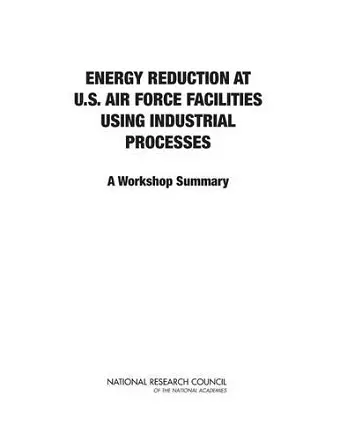Energy Reduction at U.S. Air Force Facilities Using Industrial Processes
A Workshop Summary
National Research Council author Air Force Studies Board author Division on Engineering and Physical Sciences author Committee on Energy Reduction at US Air Force Facilities Using Industrial Processes: A Workshop author Gregory Eyring editor
Format:Paperback
Publisher:National Academies Press
Published:4th Mar '13
Currently unavailable, and unfortunately no date known when it will be back

The Department of Defense (DoD) is the largest consumer of energy in the federal government. In turn, the U.S. Air Force is the largest consumer of energy in the DoD, with a total annual energy expenditure of around $10 billion. Approximately 84 percent of Air Force energy use involves liquid fuel consumed in aviation whereas approximately 12 percent is energy (primarily electricity) used in facilities on the ground. This workshop was concerned primarily with opportunities to reduce energy consumption within Air Force facilities that employ energy intensive industrial processes—for example, assembly/disassembly, painting, metal working, and operation of radar facilities—such as those that occur in the maintenance depots and testing facilities. Air Force efforts to reduce energy consumption are driven largely by external goals and mandates derived from Congressional legislation and executive orders. To date, these goals and mandates have targeted the energy used at the building or facility level rather than in specific industrial processes.
In response to a request from the Deputy Assistant Secretary of the Air Force for Energy and the Deputy Assistant Secretary of the Air Force for Science, Technology, and Engineering, the National Research Council, under the auspices of the Air Force Studies Board, formed the Committee on Energy Reduction at U.S. Air Force Facilities Using Industrial Processes: A Workshop. The terms of reference called for a committee to plan and convene one 3 day public workshop to discuss: (1) what are the current industrial processes that are least efficient and most cost ineffective? (2) what are best practices in comparable facilities for comparable processes to achieve energy efficiency? (3) what are the potential applications for the best practices to be found in comparable facilities for comparable processes to achieve energy efficiency? (4) what are constraints and considerations that might limit applicability to Air Force facilities and processes over the next ten year implementation time frame? (5) what are the costs and paybacks from implementation of the best practices? (6) what will be a proposed resulting scheme of priorities for study and implementation of the identified best practices? (7) what does a holistic representation of energy and water consumption look like within operations and maintenance?
- Front Matter
- Overview
- 1 Introduction
- 2 Presentations and Comments
- 3 Wrap Up Discussion
- Appendix A Biographical Sketches...
ISBN: 9780309270236
Dimensions: unknown
Weight: unknown
76 pages